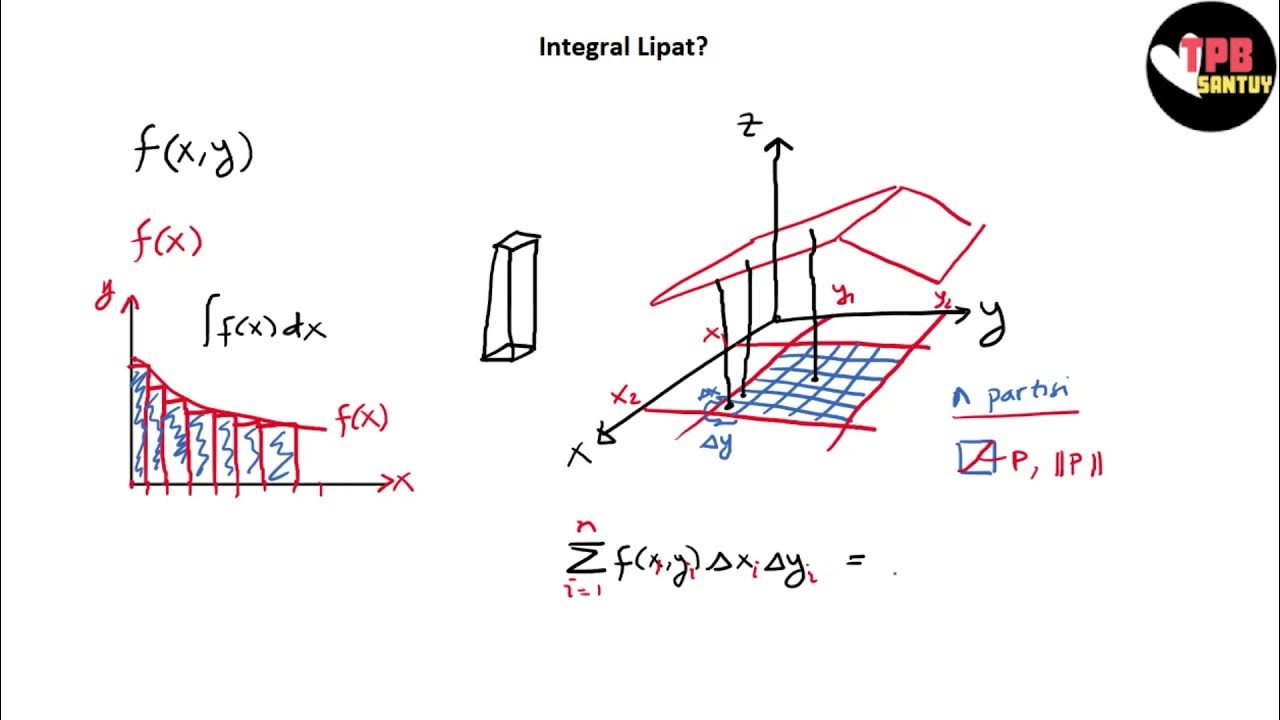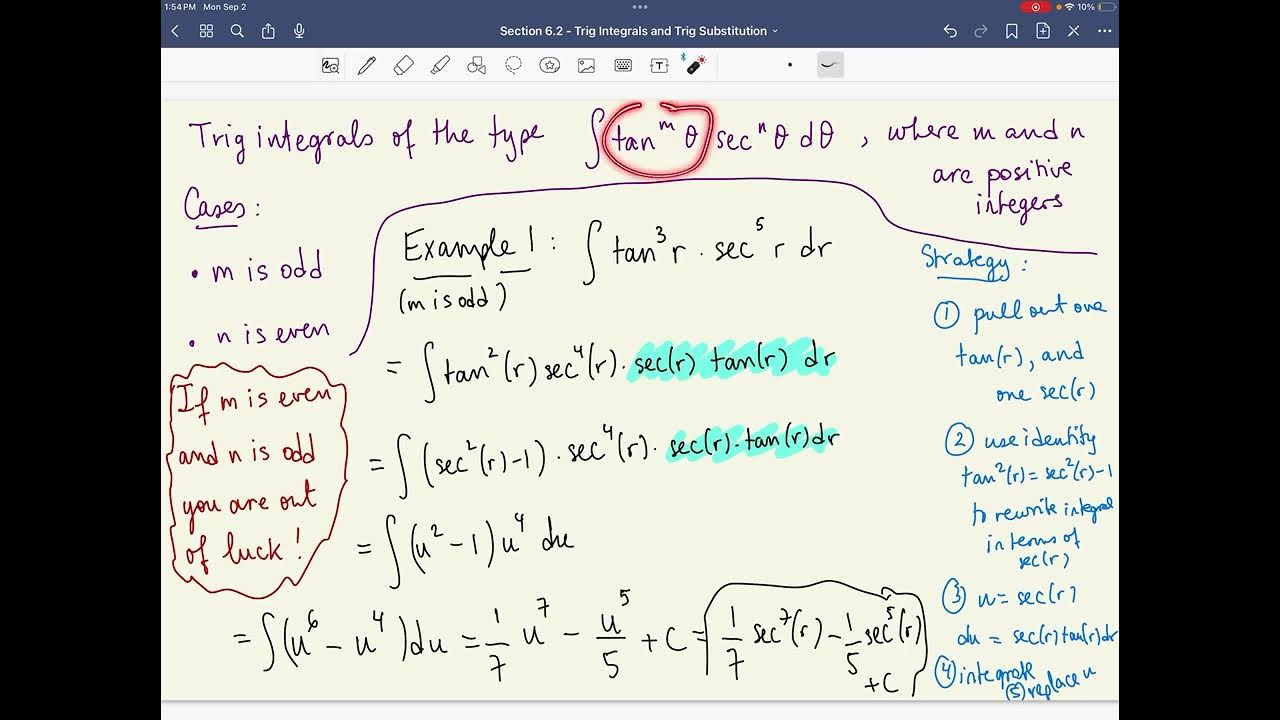INTEGRAL | SIFAT-SIFAT INTEGRAL TENTU
Summary
TLDRIn this video, the instructor dives into integral calculus, focusing on key properties of integrals. The video covers fundamental rules such as the effect of equal upper and lower limits, how to change bounds with a sign change, and how constants can be factored out. Several example problems are worked through, illustrating how to simplify and solve integrals using these properties. The tutorial aims to enhance viewers' understanding of integration techniques, providing clear explanations and practical problem-solving strategies for different integral scenarios.
Takeaways
- 😀 The integral result is 0 when the upper and lower limits are the same.
- 😀 Swapping the upper and lower limits of an integral changes its sign.
- 😀 Constants within an integral can be factored out of the integration process.
- 😀 Integrals involving sums or differences of functions can be separated into individual integrals.
- 😀 Overlapping integrals with the same limits can often be combined into a single integral.
- 😀 When limits of integration are reversed, the integral result changes sign.
- 😀 For piecewise functions, split the integral into separate intervals based on the function's behavior.
- 😀 Symmetry properties of integrals can simplify calculations, especially with even or odd functions.
- 😀 It's essential to apply properties strategically to simplify complex integral calculations.
- 😀 Always check for common integrals or patterns in the problem, such as constants or familiar functions.
Q & A
What happens when the upper and lower bounds of an integral are the same?
-When the upper and lower bounds of an integral are the same, the result of the integral is 0. This is a property of integrals, meaning if the limits of integration are identical, the integral evaluates to zero.
How can an integral with the lower and upper limits swapped be simplified?
-If the limits of an integral are swapped, the sign of the integral changes. For example, swapping the limits from A to B and from B to A results in the integral being multiplied by -1.
What is the result when you integrate a constant function over a given interval?
-When you integrate a constant function, the constant can be factored out of the integral, and the result becomes the constant multiplied by the difference between the upper and lower limits of the integration.
How do you handle integrals with functions that are sums or differences of two functions?
-When the integrand is a sum or difference of two functions, you can split the integral into two separate integrals. For example, an integral of the form ∫(f(x) ± g(x)) dx can be written as ∫f(x) dx ± ∫g(x) dx.
Can you combine integrals over adjacent intervals into a single integral?
-Yes, if two integrals have adjacent intervals and the same integrand, they can be combined into a single integral over the entire range. This is a result of the additivity property of integrals.
How can you simplify an integral when the integrand has the same function but different limits?
-When the integrand is the same and the limits are different, you can combine the integrals, provided the boundaries are adjusted correctly. For example, if you have two integrals with matching functions but different limits, you can simplify the expression using the additivity or symmetry properties.
What is the approach for integrating piecewise functions?
-When integrating piecewise functions, you must split the integral based on the different intervals where the function behaves differently. Each piece of the function is integrated over its specific domain, and then the results are combined.
How do you calculate the integral of a quadratic function?
-To integrate a quadratic function, you apply the standard rules for polynomial integration. For example, integrating x^2 would result in (x^3)/3, and you subtract the results for the upper and lower limits of the integration.
What is the importance of understanding the properties of integrals in solving problems?
-Understanding the properties of integrals, such as how to handle constant factors, swap limits, and combine adjacent intervals, is crucial in simplifying and solving complex integral problems. These properties help reduce the complexity of calculations and make problem-solving more efficient.
In the example where the integral from 0 to 1 of x^5 + 1 dx is combined with the integral from 0 to 1 of x^5 dx, how does this simplify the problem?
-By combining the two integrals, you can simplify the problem. The terms involving x^5 cancel out, leaving only the integral of 1 dx from 0 to 1. This makes the integral much simpler and easier to solve, resulting in a final value of 1.
Outlines

This section is available to paid users only. Please upgrade to access this part.
Upgrade NowMindmap

This section is available to paid users only. Please upgrade to access this part.
Upgrade NowKeywords

This section is available to paid users only. Please upgrade to access this part.
Upgrade NowHighlights

This section is available to paid users only. Please upgrade to access this part.
Upgrade NowTranscripts

This section is available to paid users only. Please upgrade to access this part.
Upgrade NowBrowse More Related Video
5.0 / 5 (0 votes)





